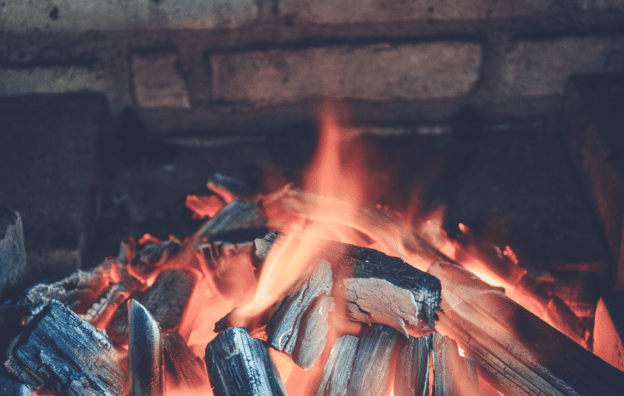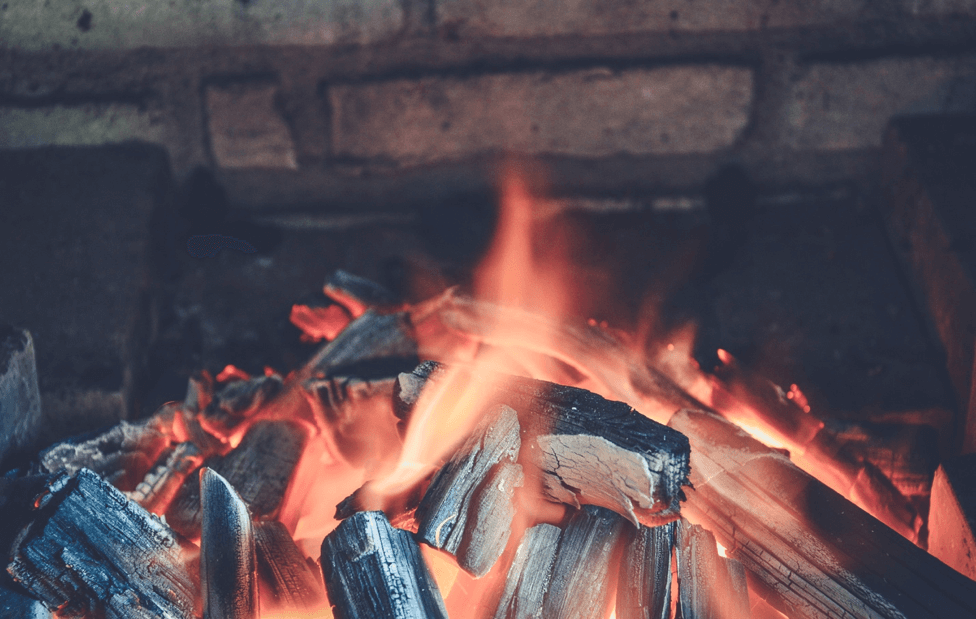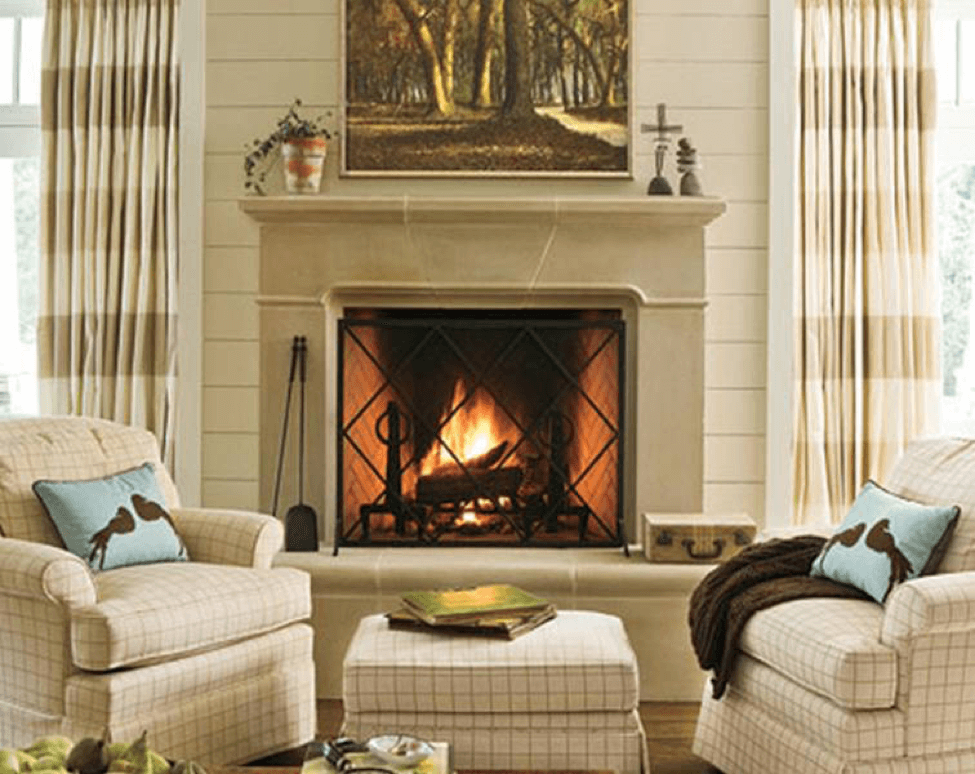
Best Practices for Building Fires in Your Fireplace
Fires are cozy, welcoming, and remind many of us of holidays and beloved family traditions. But if built improperly, they can also be dangerous. As we head into fall, this week we’ll review best practices for building a safe and lovely fire in your wood-burning fireplace.

Our best practices for building fires in your fireplace from your friends at Old World Stoneworks.
Best Fireplace Practice: Choose your wood carefully
All wood doesn’t burn the same. If your wood is too green or wet, your fire will fail and will release more creosote in your chimney. Instead, buy dry, properly seasoned wood from a dealer. If you choose to split your own, you’ll need to stack if off the ground, cover it, and let it dry out for at least six months. Oak, maple and other dense hardwoods burn the longest and produce the most heat.
Best Fireplace Practice: Arrange your wood methodically
People become very attached to their method of building fires. Our best practice? We suggest the log cabin method. This entails placing two bottom logs – barkless, please — about six inches apart, parallel to the back of the fireplace. Heap kindling such as twigs or newspapers in between and place two perpendicular logs on top of the original two, to form a rectangle. Sort of like a primitive log cabin. You can add another log layer for a bigger fire.
Best Fireplace Practice: Light it right
Many folks light fires from the bottom up. Instead, as a fireplace best practice, we prefer to heap some small kindling on top and light that. Then the fire starts hot on the top, traveling down to slowly burn the logs and can use this hot base to add more wood as needed. Keep your fire small to reduce smoke and creosote from being created.
Best Fireplace Practice: Consider your kindling
Old newspaper is always popular since most households have some on hand. Best fireplace practice tip: use fire starters such as pine cones or clusters of wax shavings to make fire-starting even easier. Always be sure the wood you are building has not been chemically treated or polished as emissions can damage your families air quality and furniture.
Best Fireplace Practice: Putting out your fire
After you’ve spent time enjoying family around your crackling fire or are ready to get out of the house and into some winter fun, leave a shovel close to the hearth for easy put out. Usually, a fire will burn down gradually, but for a faster put-out use our best practice tip: the banking method. This is done by breaking apart your logs with a shovel and covering them in ashes to suffocate the fire. It will either kill the fire enough to safely leave and restart later or it will totally extinguish the flames with time.
Best Fireplace Practice: Fire Safety
Emergencies do happen and our number one best practice tip: always be prepared. Keep a first-aid kit in your house that contains bandages, ointments, and pain relief medication in case of burns that may occur when starting or putting out your fire. In a scenario where a fire is out of control and calls for an emergency put out, keep a fire blanket or bag of sand in the room to control the flames. These worst-case scenarios are what smoke alarms are designed for, make sure your batteries are fully juiced and prep your fireplace before lighting.
Ready for a fire?

A beautiful fireplace mantel makes a house a home.
Are you getting excited about autumn fires? To get optimal enjoyment out of your fire, consider a new mantel. It will freshen the room, and look amazing in holiday photos with the family. If you’re in the market for a mantel upgrade, give your friends at Old World Stoneworks a call today.

